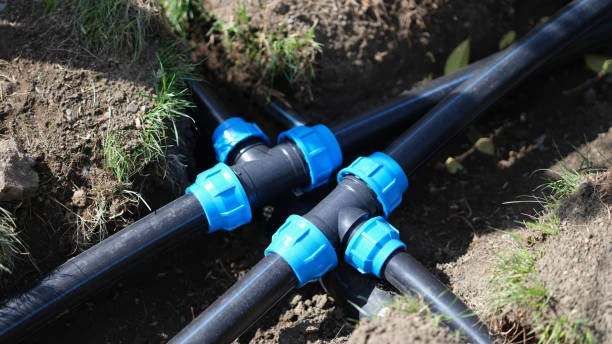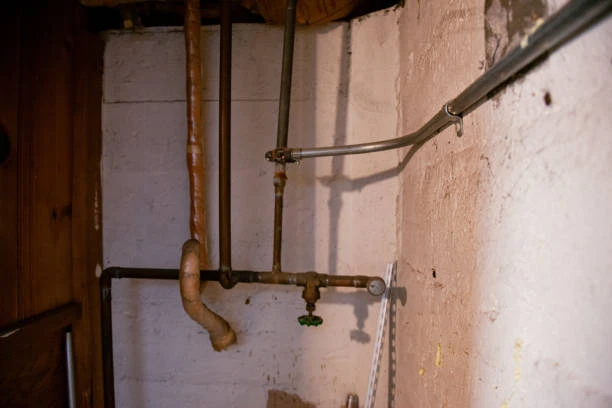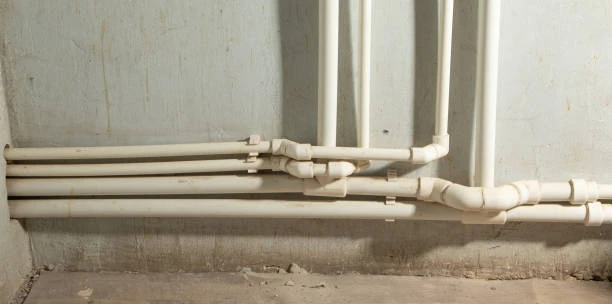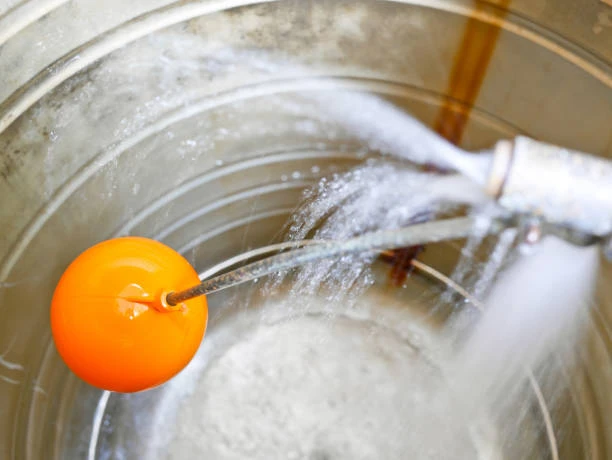1. Introduction
HDPE (High-Density Polyethylene) water pipes have become a leading choice in the plumbing and water management industries worldwide. Their unique combination of flexibility, strength, and chemical resistance makes them ideal for transporting potable and non-potable water. This article covers the essential features of HDPE water pipes, explaining why they outperform traditional materials and how to choose and install them properly.
2. Frequently Asked Questions (FAQ)
1. What makes HDPE water pipes different from other pipes?
HDPE pipes offer superior flexibility, corrosion resistance, and leak-free joints through heat fusion, which makes them more durable and reliable.
2. Are HDPE water pipes safe for drinking water?
Yes, HDPE pipes meet strict safety standards and are widely used for potable water delivery.
3. Can HDPE pipes withstand outdoor conditions?
Yes, they contain UV stabilizers that protect against sunlight and weathering.
4. How long can HDPE water pipes last?
Properly installed HDPE pipes can last 50 years or more.
5. What sizes and pressure ratings are available?
HDPE pipes come in various diameters and pressure ratings (PN6, PN10, PN16, etc.) to suit different applications.
3. Basic Definition and Characteristics of HDPE Water Pipes
HDPE water pipes are made from a dense polyethylene polymer that gives them exceptional mechanical properties. Key characteristics include:
Flexibility: Can bend to accommodate ground shifts without cracking.
Corrosion resistance: No rust or chemical degradation, even in harsh soils.
Smooth interior surface: Minimizes friction, ensuring efficient water flow.
Leak-free joints: Heat fusion welding creates a monolithic system, preventing leaks.
UV resistance: Formulated with additives to resist sunlight degradation.
Lightweight: Easier and safer to transport and install than metal pipes.
Long service life: Typically rated for over 50 years of use.
4. Common Uses and Industries
HDPE water pipes are suitable for a wide range of water-related applications:
Municipal drinking water systems
Rural and agricultural irrigation networks
Industrial water processing and transport
Mining and slurry pipelines
Drainage and stormwater management
Water distribution in construction projects
5. How to Choose HDPE Water Pipes: Material, Color, and Certification
When selecting HDPE water pipe, consider these factors:
Material Grade: Choose PE80 or PE100 for higher strength and pressure tolerance.
Pipe Diameter & Wall Thickness: Match the pipe size and SDR rating to your pressure and flow requirements.
Color Coding: Blue stripes indicate potable water use; black with yellow stripes are for gas.
Certifications: Look for compliance with ISO 4427, ASTM D3035, EN 12201, NSF/ANSI 61, and local standards to ensure safety and quality.
6. Installation Considerations
Proper installation is crucial for maximizing the performance and lifespan of HDPE water pipes:
Trenching: Ensure the trench bottom is free from sharp stones and debris.
Handling: Avoid dragging pipes on rough surfaces to prevent damage.
Joining Methods: Use heat fusion or electrofusion welding for strong, leak-free joints.
Bending Radius: Follow manufacturer guidelines to avoid kinks during bending.
Pressure Testing: Conduct hydrostatic pressure tests after installation to detect leaks.
UV Protection: For above-ground installations, ensure adequate UV protection if pipes lack UV stabilizers.
7. HDPE Water Pipe vs Other Pipe Materials (Comparison Table)
| Feature | HDPE Water Pipes | PVC Pipes | Steel Pipes | Copper Pipes |
|---|---|---|---|---|
| Flexibility | High | Moderate | Low | Low |
| Corrosion Resistance | Excellent | Good | Poor (rust prone) | Excellent |
| Leak Resistance | Heat fusion joints | Solvent-welded | Threaded/welded | Soldered |
| Weight | Lightweight | Lightweight | Heavy | Moderate |
| Lifespan | 50+ years | 30–50 years | 20–50 years | 40–70 years |
| UV Resistance | Yes (with additives) | Limited | None | None |
8. Summary
HDPE water pipe stand out for their flexibility, corrosion resistance, leak-free joints, and long service life. Their lightweight and ease of installation make them a cost-effective choice for water distribution systems in many industries. Whether for municipal supply, agriculture, or industrial water transport, HDPE pipes provide reliable performance and sustainability.
IFAN international standard
HDPE pipes are manufactured in accordance with multiple international standards to ensure quality, durability, and application safety. In the U.S., ASTM D3035 and ASTM D3350 define the dimensional and material requirements for HDPE pressure pipes. ISO 4427 and EN 12201 are widely accepted global and European standards for HDPE pipes in water and wastewater systems. DIN 8074/8075 specify German technical norms, while GB/T 13663 is the standard in China. AS/NZS 4130 applies in Australia and New Zealand, and JIS K6760 covers Japanese quality criteria. BS 6572 outlines standards for HDPE pipes in the UK, and CSA B137.1 regulates their use in Canada. These standards ensure that HDPE piping systems meet essential criteria for pressure resistance, chemical stability, and long-term performance in infrastructure and industrial applications.
Connect
IFAN is a reputable Chinese manufacturer with 30 years of expertise in plastic pipes, fittings, and valves. We specialize in copper fittings, brass valves, and plastic piping solutions that meet a wide range of plumbing needs.
If you want to learn more about our cost-effective valve products and comprehensive piping systems, please contact us. Our professional team will reply within 24 hours to assist with your requirements.
Contact Information:
- For more information,pls visit our webside https://waterpipefitting.com/
Pls Mailto: [email protected]
Whatsapp: +86 15088288323
Feel free to reach out anytime for questions about our products or technical advice.














Recent Comments